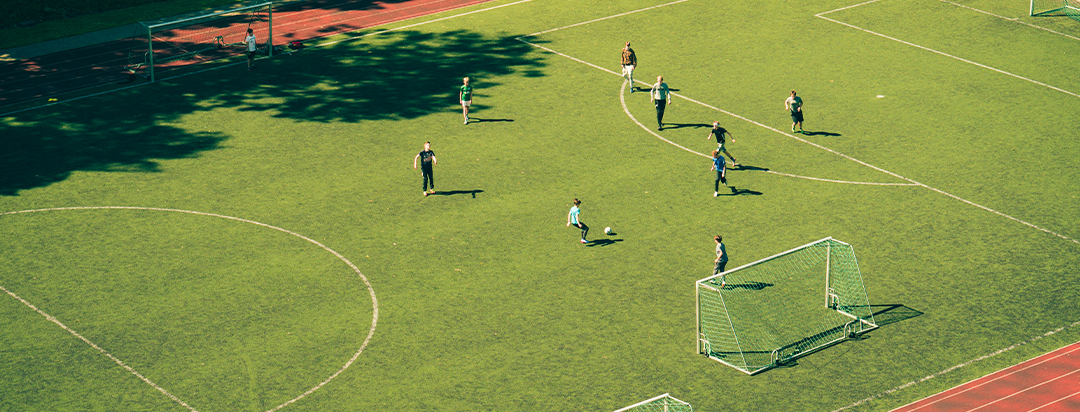

Lorem ipsum dolor sit amet, consectetur adipiscing elit ut liqua purus sit amet luctus venenatis, lectus magna.

Walking soccer is a modified version of traditional soccer built around controlled movement, steady pacing, and reduced physical strain. It keeps the familiar structure of the sport—passing, positioning, teamwork, and scoring—while removing the running and high-impact motions that make the full-speed game demanding for many players. The result is a format that remains competitive and strategic, but far more accessible.
The defining rule is straightforward: players must walk, not run. One foot must remain in contact with the ground at all times, which changes how teams move, defend, and create scoring chances. Because players can’t rely on bursts of speed, the flow becomes more deliberate. Matches emphasize reading the field, anticipating plays, and using accurate passing to create space.
The field is usually smaller, and teams often have fewer players, which keeps the action contained and manageable without feeling slow. Even though the pace is dialed back, the match retains the rhythm of soccer—possessions build, defenses adjust, and opportunities develop through movement rather than sprinting.
Walking soccer appeals to people who want a competitive outlet without the strain of running or contact-heavy play. It gives former players a way to return to the sport, and it offers newcomers an entry point that doesn’t require extensive conditioning. The reduced speed lowers the risk of common injuries associated with traditional soccer, making it suitable for those with mobility concerns or recovering from previous injuries.
Many players find that the slower pace doesn’t diminish the experience—it simply shifts the challenge. Games become more about shaping plays than outrunning opponents, which adds a layer of strategy that some find even more engaging than the traditional version.
While organizations may adjust details slightly, several principles remain consistent. Running is prohibited, and officials watch closely for players lifting both feet off the ground at once. Slide tackles are typically banned to maintain safety. Physical contact is limited, which keeps matchups clean and places emphasis on positioning rather than force.
The ball tends to stay on the ground more often. High, looping passes are harder to control without running, so teams rely on controlled touches, short combinations, and steady ball movement. Shooting still matters, but players must generate chances through precision instead of pace.
Walking soccer draws a remarkably varied group. Many players are older adults who want to stay active and continue participating in a sport they enjoy. Others join because they prefer a low-impact activity that still feels competitive. Some are recovering athletes using walking soccer as a way to rebuild fitness without risking reinjury.
The format works well in mixed-age settings, and it’s common for teams to include players with a wide range of experience levels. The game’s structure naturally evens the playing field, encouraging communication and smart movement rather than relying on pure physical advantage.
Despite the slower pace, walking soccer offers meaningful exercise. Continuous movement improves cardiovascular health, while changes in direction build balance and coordination. Because every player remains involved throughout the match, the activity level stays steady rather than alternating between bursts of action and long periods of rest.
Mentally, the game also stays engaging. Players must track the field, anticipate passes, and react quickly within the constraints of walking. This combination of physical and cognitive activity makes the sport appealing to those who want a well-rounded form of exercise that doesn’t rely on speed or impact.
Walking soccer provides a practical, accessible variation of the sport that maintains its structure while significantly reducing physical strain. It combines steady movement, strategic play, and consistent involvement, making it suitable for a wide range of players. As participation continues to grow, walking soccer has established itself as a strong alternative for anyone who wants a competitive yet manageable version of the game.


Explore our collection of 200+ Premium Webflow Templates